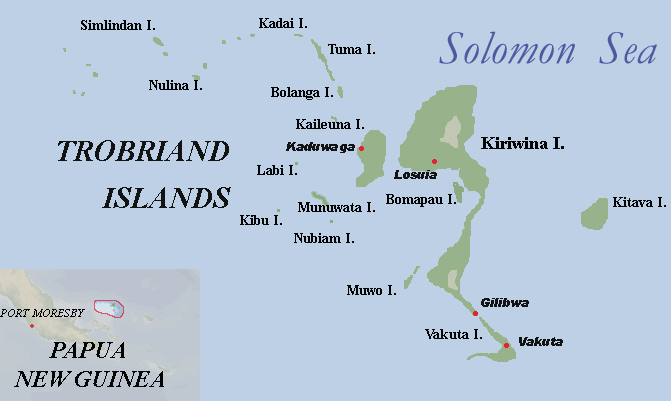Yam Land

The Trobriand Islands are an archipelago, part of Papua New Guinea, about 100 miles northeast of Oceania, where most of Papua New Guinea is located. The area is inhabited by about 12,000 people native to the islands for generations. These people have modernized over the years, welcoming advances in medicine and other innovations into their lives. But, by and large, they have managed to retain their cultural anachronisms.
And all these cultural quirks have a common denominator: yams.
Yams are the staple food of the island, making them a big part of everyday life, as expected, but also into milestone moments. There is no traditional marriage ceremony on the Trobriand Islands. Instead, according to Wikipedia, the man and woman’s courtship becomes serious when they spend the night together (denotatively; whether the connotative meaning is also true is left unsaid) and, the next morning, the bride’s mother brings cooked yams to the fledgling couple. If a couple divorces, the man can try and woo his ex-wife back by bringing an offering of yams to her family. And even pregnancies are yam-related; the Trobriands believe that pregnancies are caused by a dead spirit called a baloma, and not the male in the relationship. That belief, per Wikipedia, stems from the fact that yams are the food staple of the island, and yams have slight contraceptive value, making the otherwise obvious cause of pregnancy a lot less obvious.
The yam is exalted to a status well beyond that of any other vegetable; each family has a festival yam exchange each year, as described by Wikipedia:
At the beginning of the yam harvest, the yams stay on display in gardens for about a month before the gardener takes them to the owner. The owner is always a woman. There is a great ceremony for this every year. The yams are loaded into the woman’s husband’s empty yam house. Young people come to the gardens dressed in their most festive traditional clothes early on the day the yams are delivered to the yam house. The young people are all related to the gardener, and carry the yam baskets to the owner’s hamlet. When they get to the owner’s hamlet, they sing out to announce the arrival of the yams while thrusting out their hips in a sexually provocative motion. This emphasizes the relation between yams and sexuality. A few days later, the gardener comes and loads the yam house, and the man is now responsible for the yam.
The culture on the island is matrilineal and, according to one anthropological case study, a girl’s uncle, not her father, is the one charged with providing her with food and material wealth — in both cases, that means he gives her yams. In fact, there is very little money on the islands. Instead, as one could probably guess, the Trobriands use yams as currency. This is true even after death, when those who help bury the recently deceased are compensated for their work in the ubiquitous tubers grown on the island.
Bonus fact: In the U.S., sweet potatoes are often called yams. They are, however, two different vegetables, as noted by the North Carolina Sweet Potato Association (which, shockingly, exists). The Association further notes (in the form of a yam vs. sweet potato pop quiz) that yams are originally from Africa and are rarely sold in the U.S., so if you’re in America and think you’re eating a yam, you probably aren’t.
From the Archives: The Most Isolated People in the World: Another group of indigenous people on a small island, but in this case, they’re not focused on yams — but instead, on being left alone. At times, by force.
Related: A six-pack of canned candied yams . . . or so the label says. Look carefully, though, and you’ll see the truth in smaller print: “cut sweet potatoes.” Unreviewed.

Leave a comment